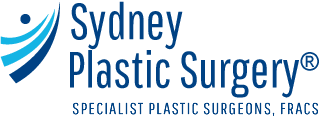Abdominoplasty (Tummy Tuck) – Information and Costs
Abdominoplasty is now one of our most frequently requested plastic surgery procedures.
The procedure removes loose skin and fat from the middle and lower abdomen, tightening the abdominal muscle wall and connective tissues to create a firmer stomach and slimmer waist.
Liposuction may be included to recontour and reshape the abdomen, hips, and waist. Individual results vary.
Tummy tuck Sydney costs
| Procedure | Price Estimate | Conditions/Comments |
| Full Abdominoplasty including Abdominal/ Flank Liposuction, Repair of abdominal muscle and pubic lift. | $15,990 – $18,990 | This price includes surgeon fee, anaesthetic fee 6 weeks follow up. If fund cover does not apply in your situation, plan for additional costs of around $6,000-$8,000 for the hospital. You may be eligible for $980 Medicare rebate. |
| Lower Abdominoplasty (Mini Tummy Tuck) | $9,990 – $12,990 | This price includes surgeon fee, anaesthetic fee 6 weeks follow up. If fund cover does not apply in your situation, plan for additional hospital costs. |
| Extended radical Abdominoplasty, pubic lift and full Abdominal/ Flank and mons Liposuction. | $16,900-$22,990 | This price includes surgeon fee, anaesthetic fee 6 weeks follow up. It assumes top hospital cover with a private health fund. If fund cover does not apply in your situation, plan for additional hospital costs. |
Post abdominoplasty care
Post-Operative Care Instructions for Extended Abdominoplasty with Liposuction
- Wear the provided abdominal binder or compression garment continuously for the first 6 weeks, removing only for showering. This helps to minimise swelling and support the healing tissues.
- Keep your incision sites clean and dry. Gently cleanse the incisions daily with mild soap and water, then pat dry and apply fresh dressings as directed.
- Take prescribed pain medication as needed for discomfort. Transition to paracetamol once the pain is well controlled. Avoid NSAIDs (e.g. ibuprofen, naproxen) for the first week to minimise bleeding risk.
- Begin gentle ambulation the day after surgery to promote circulation and prevent blood clots. Gradually increase activity as tolerated, but avoid strenuous exercise, lifting >5kg, or core exercises for 6 weeks.
- To minimise tension on the incision, sleep with your upper body slightly elevated (3040°) and your knees bent for the first 12 weeks. A recliner chair or propping yourself up with pillows works well.
- Expect bruising, swelling, and numbness, which will gradually improve over several weeks to months. Persistent swelling or asymmetry may take 612 months to fully resolve.
- Attend all scheduled postoperative appointments for incision checks, drain removal (if was not removed in hospital), and monitoring of your healing.
- To optimise scar appearance, begin scar massage and silicone-based scar therapy once incisions are fully healed (typically around 6 weeks postop) and continue for at least 6 months.
- Avoid smoking and secondhand smoke exposure, as this delays healing and increases risk of wound complications.
- To prevent hyperpigmentation, avoid direct sun exposure to the incisions for at least 36 months. When outdoors, use SPF 30+ and physical barriers (clothing).
- Wait at least 6 weeks before resuming sexual activity.
- Do not drive while taking prescription pain medication or if you are having any discomfort with twisting movements.
- Plan to take at least two weeks off work to recover. Additional time off may be needed if your job is physically strenuous.
- Contact the office immediately if you develop any signs of infection (redness, swelling, discharge, fever), excessive pain or swelling, leg pain/swelling, shortness of breath, or other concerns. Our after-hours line is available for urgent issues.
To find out more:
Book a consultation with Dr Barnouti who will advise you on the best approach and expected outcome during your initial consultation.
Book online or call us on free phone 1300 002 006.
We look forward to meeting you and to helping you.
How to Book?
Call us on free phone 1300 002 006 if you are outside Sydney or 9561 0222 if you’re in the Sydney area
Call us on free phone 1300 002 006 if you are outside Sydney or 9561 0222 if you’re in the Sydney area
